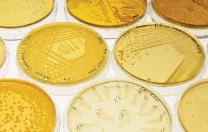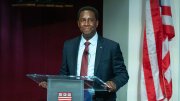Moving Microbial Science Forward
Moving Microbial Science Forward
Feature Article: The Undiscovered Planet Today, operating out of borrowed space in Harvard’s Center for the Environment, the Microbial...
Return to main article:
Today, operating out of borrowed space in Harvard’s Center for the Environment, the Microbial Sciences Initiative (www.msi.harvard.edu) funds six postdoctoral fellows who typically bridge two labs in different departments, often across schools; sponsors 12 undergraduate summer fellowships; arranges monthly seminars that bring in speakers from around the world; and hosts an annual symposium. This past summer, MSI held a workshop for high-school teachers designed to help them incorporate microbial education into their curricula. In the current academic year, the initiative will introduce two new undergraduate courses: Life Sciences 190hf, “Diverse Microbial Strategies for Metabolism, Pathogenesis and Chemical Signaling,” taught by Harvard Medical School (HMS) professor of genetics Gary Ruvkun, and Life Sciences 110, “A Microbial World,” designed for students pursuing microbial science as a secondary field and co-taught by professor of microbiology and molecular genetics Roberto Kolter and professor of biological chemistry and molecular pharmacology Jon Clardy, both of HMS, and Cabot associate professor of earth and planetary sciences Ann Pearson, a biogeochemist in the Faculty of Arts and Sciences.
Explore More From Current Issue

A Changed Harvard Faces the Future
After a tense summer—and with no Trump settlement in sight—the University continues to adapt.

The Origins of Europe’s Most Mysterious Languages
A small group of Siberian hunter-gatherers changed the way millions of Europeans speak today.

Rachel Ruysch’s Lush (Still) Life
Now on display at the Museum of Fine Arts, a Dutch painter’s art proved a treasure trove for scientists.



